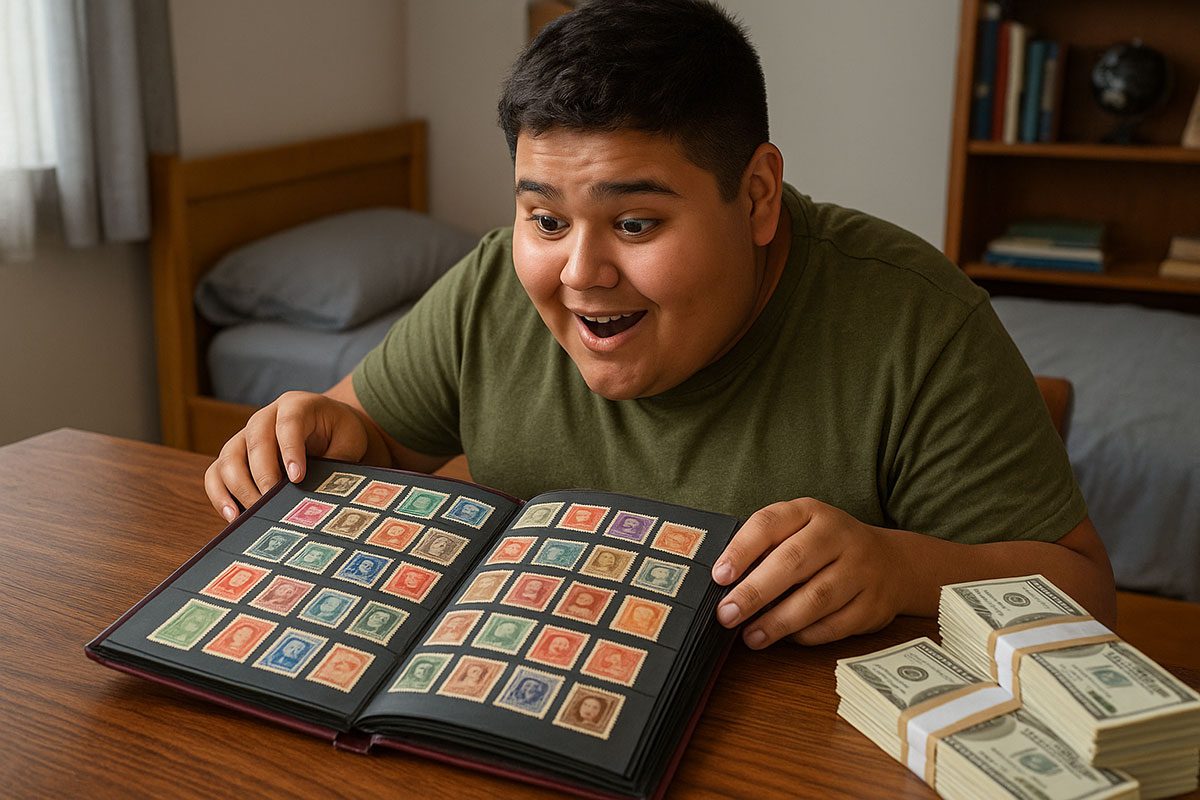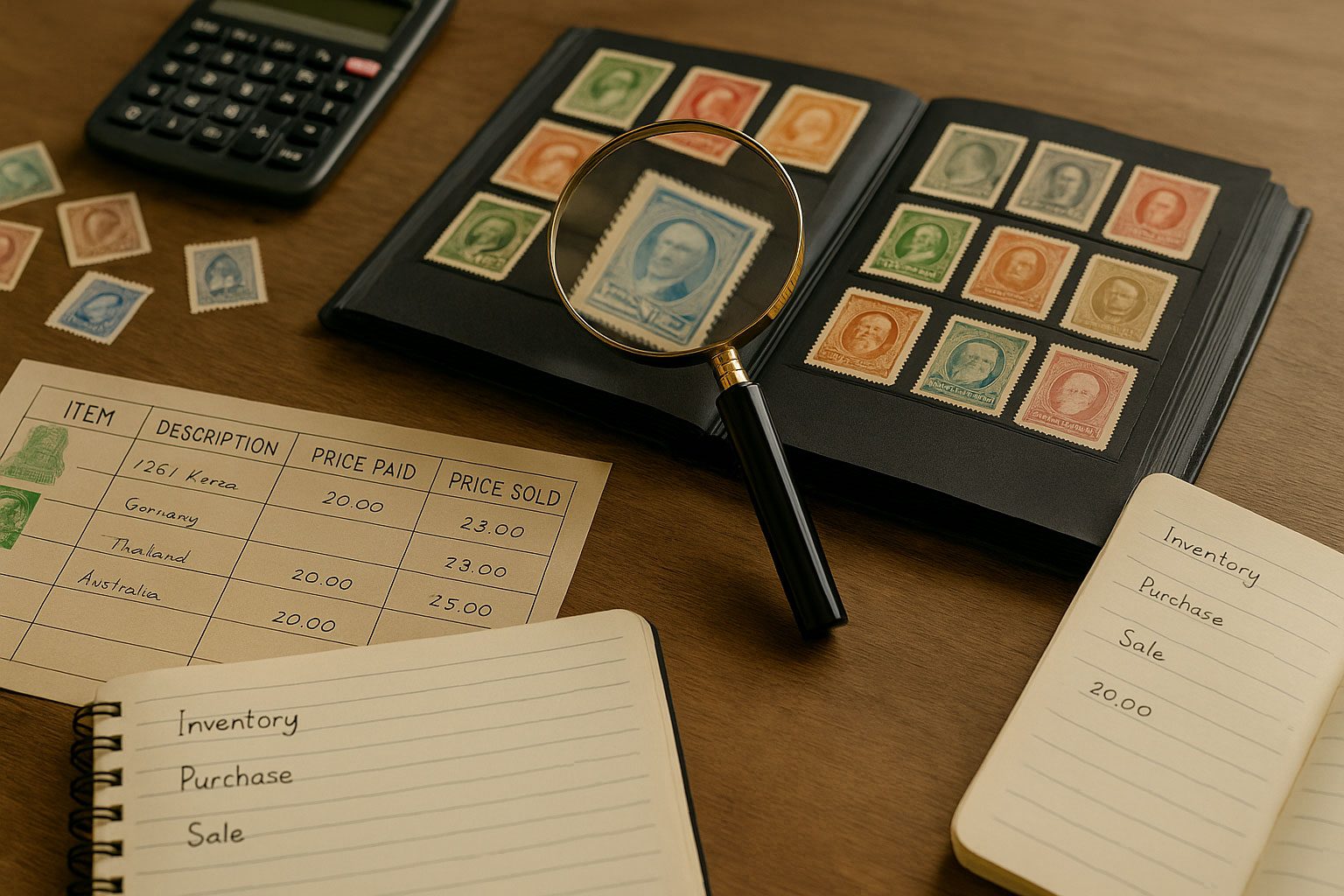If you’ve come across a box of old stamps in an attic, inherited a stamp album from a relative, or rediscovered a childhood collection, you might be wondering if those old stamps are worth money. Some stamps are valued at pennies, while others have sold for thousands of dollars. Knowing what to look for is essential if you want to identify the ones with real financial value.
Old stamps can hold monetary, historical, or cultural worth. But not every stamp issued decades ago is valuable. The key lies in understanding the specific attributes that drive stamp value in today’s market.
The Key Factors That Determine Stamp Value
Condition, Rarity, and Demand
Stamp collectors and dealers assess old stamps using several consistent criteria. Learning to recognize these qualities can help you determine whether your old stamps are worth money or just sentimental.
Condition
Condition is one of the most important factors. A stamp in mint condition (never used, with full original gum) will usually be worth more than the same stamp used for postage. Look for:
- No tears, creases, or stains
- Centering of the design within the perforations
- Strong, original color
- Undamaged perforations
- Original gum on mint stamps
Even a rare stamp in poor condition may have diminished value. In contrast, a common stamp in pristine condition may still be desirable to collectors.
Rarity
Stamps printed in limited quantities or with short-lived designs are more likely to be rare. Errors, misprints, and unusual printing varieties can also be scarce, increasing demand.
Some examples of rarity:
- Printing errors like inverted images or color shifts
- Short production runs or withdrawn issues
- Stamps from countries with low surviving quantities
Check catalogs or databases to see how many of a certain stamp were printed or are known to exist today.
Age
Older stamps can sometimes be more valuable—but not always. Age alone doesn’t determine value. For instance, a common U.S. stamp from the early 1900s might be worth less than a rare one from the 1960s.
However, very old stamps in great condition often attract interest simply because they’ve survived over time. Use age as a supporting factor, not the sole indicator.
Demand
Demand among collectors can vary based on topic, geography, and current trends. For example, stamps featuring historical events, famous figures, or attractive artwork are often more sought after. Stamps from certain countries or regions may also fetch higher prices due to collector interest.
Topical collecting—based on themes like birds, royalty, or space—can also influence what stamps people are looking for, regardless of age or rarity.
Mint vs. Used Stamps
Why Mint Condition Matters
In the stamp world, “mint” refers to stamps that have never been used and retain their original adhesive gum. These are typically worth more than used versions, especially if the gum is undisturbed.
Used stamps, however, can still be valuable—especially if they were canceled in a unique or rare way. Some collectors specialize in postal history and postmarks. A stamp on an original envelope (a “cover”) may be even more valuable than the stamp alone, depending on its historical significance.
How to Evaluate Your Stamp Collection
Step-by-Step Review
Before assuming your stamps are valuable or valueless, do a basic assessment.
Step 1: Sort by Country and Era
Start by identifying the country of origin and general time period. Group stamps accordingly. Most stamps will have a country name and some form of date reference—either printed directly or inferred from postal rates and design style.
Step 2: Inspect Condition and Format
Check whether the stamps are mint or used, mounted or loose, and single stamps or part of a sheet. Note any damage like thinning paper, discoloration, missing perforations, or adhesive residue.
Step 3: Look for Unusual Features
Examine each stamp for errors, odd color combinations, inverted images, or off-center designs. These details may not be obvious at first glance but can significantly impact value.
Step 4: Use a Stamp Catalog
Use a current stamp catalog like Scott, Stanley Gibbons, or Michel to identify and estimate values. Catalogs assign reference numbers, descriptions, and approximate values for both mint and used stamps.
Online tools and databases can also help if you don’t have access to a physical catalog.
Step 5: Check for High-Value Indicators
Some characteristics that may suggest higher value:
- Early 19th-century stamps with clean cancellations
- Classic British Commonwealth issues in mint condition
- Misprints, overprints, or design errors
- Famous historical figures or political themes
- Unusual denominations or formats
Red Flags That a Stamp May Not Be Valuable
When Age Doesn’t Equal Worth
It’s common to think that any stamp from the early 1900s must be rare, but mass production during those times means many stamps still exist in large quantities.
Here are signs your old stamps might not be worth much:
- Torn, stained, or heavily creased
- Poor centering or faded colors
- Stamps issued in the billions (especially U.S. issues from the 1940s–1980s)
- Missing original gum or signs of re-gumming
- Heavy cancellations obscuring the design
Stamps in these categories may still be enjoyable to keep, but their resale potential is limited.
Commonly Mistaken “Rare” Stamps
Popular but Not Profitable
Many collections include stamps that appear valuable but aren’t. Here are a few examples that frequently lead to overestimated value:
- U.S. 3¢ stamps from the 1850s–1870s: Heavily collected but extremely common
- Liberty and Flag stamps from the 1960s–1980s: Produced in the billions
- United Nations stamps: Issued in large numbers with limited collector demand
- Stamps sold as souvenirs or promotional items: Often not valid for postage and mass-produced
If your collection includes any of these, don’t be discouraged—they may still have educational or decorative value.
The Role of Certification
When to Get Stamps Expertized
High-value or questionable stamps may need authentication by a professional. Certification confirms a stamp’s genuineness and provides a written description of its condition and attributes. Major expertizing services include:
- Philatelic Foundation (U.S.)
- American Philatelic Expertizing Service (APEX)
- British Philatelic Association
- Royal Philatelic Society London
Certification is especially important if you intend to sell a high-value item or suspect your stamp may be a known rare variety.
Selling Old Stamps Worth Money
Converting Value Into Cash
Once you’ve determined that some of your old stamps are worth money, there are several ways to sell them.
Direct Sale to Dealers
Professional stamp dealers often buy collections or individual items. This is usually the fastest route to a sale. Be prepared to receive an offer below catalog value, as dealers need to factor in resale margins.
Choose a dealer with experience in your specific type of stamps and a reputation for fair transactions.
Stamp Auctions
Auction houses specializing in philately may accept rare or high-end material. Auctions can draw competitive bids, but also involve commission fees and waiting periods. Online auctions like eBay can also work for selling individual stamps, but require more effort, research, and shipping on your part.
Online Stamp Buyers
Websites like WestCoastStamps.com make it simple to submit your collection for review. You can upload photos, describe the collection, and receive offers from experienced buyers who know how to assess old stamps worth money.
This route is ideal for people who want a secure, fast, and hassle-free process.
Preserving Your Collection
Keeping Old Stamps Safe
Even if you’re not ready to sell yet, it’s important to preserve your stamps properly to retain their value.
Use the following tips:
- Store stamps in acid-free albums or stock books
- Keep them in a cool, dry environment with stable temperature
- Avoid exposure to sunlight or fluorescent lighting
- Handle stamps with tongs to prevent oils or tears
- Never use tape or glue to mount stamps
Proper care helps protect both monetary and historical value.
Should You Get an Appraisal?
When Professional Valuation Makes Sense
If your collection is large or inherited, and you’re not sure where to begin, a professional appraisal can be worth the investment. Reputable stamp dealers, auction houses, or appraisal services can give you a documented estimate of value.
This can be useful for:
- Insurance purposes
- Estate planning
- Preparing to sell
- Personal education
Choose an appraiser who specializes in the regions or time periods your stamps come from. Ask for references, and don’t hesitate to get a second opinion for high-value items.
How West Coast Stamps Can Help
Your Partner in Evaluating and Selling Stamps
At WestCoastStamps.com, we help individuals figure out if their old stamps are worth money—and what to do with them. Whether you’re holding a few vintage U.S. issues or an entire international collection, we can provide expert guidance and fair market evaluations.
Our process is simple:
- Submit your collection details through our online form
- Receive a personalized response from one of our stamp professionals
- Get a fast, no-obligation offer for your stamps
We take pride in offering transparency, fair pricing, and decades of philatelic experience. If you’ve got old stamps worth money, we’ll help you unlock their value.


